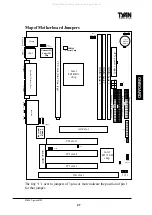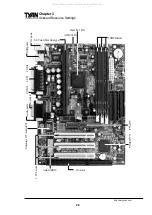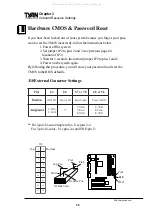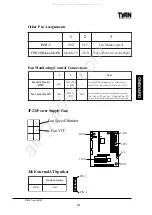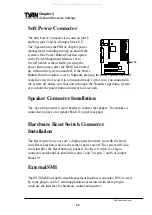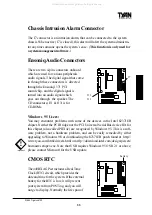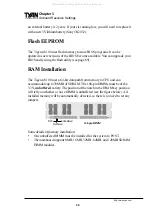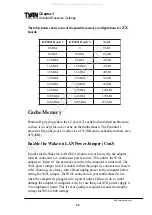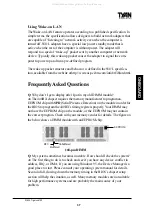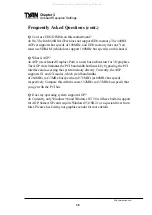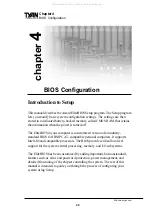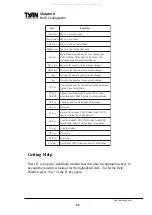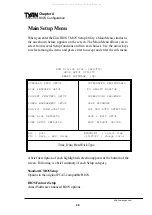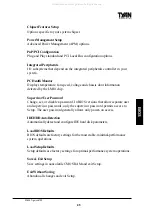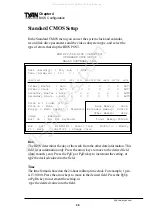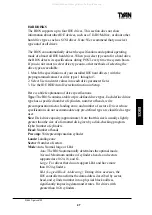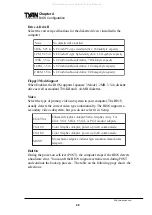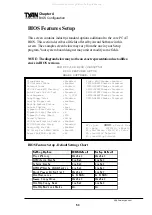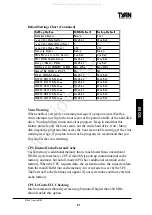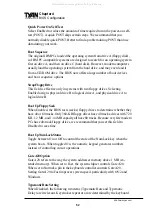
S1894 Tigercub 100
37
ONBOARD
Using Wake-on LAN
The Wake-on LAN feature operates according to a published specification. In
simple terms, the specification allows designers to build network adapters that
are capable of listening to network activity even when the computer is
turned off. WOL adapters have a special low power standby mode that is
active when the rest of the computer is without power. The adapter will
respond to a special wake-up packet sent by another computer or network
device. Typically this wake-up packet causes the adapter to signal the com-
puter to power up and run a pre-defined program.
The wake up packet structure and behavior is defined in the WOL specifica-
tion, available from the website at http://www.us.pc.ibm.com/infobrf/iblan.html.
Frequently Asked Questions
Q:
Why dont I get a display after I put in my old DIMM module?
A:
The 440BX chipset requires the memory manufacturer to program an
EEPROM chip with
SPD
(Serial Presence Detection) on the module in order for
the BIOS to program the 440BXs timing registers properly. Your DIMM may
not have the EEPROM chip on the module, or the EEPROM may not contain
the correct program. Check with your memory vendor for details. The figure on
the below shows a DIMM module with an EEPROM chip.
Q:
My system sometimes becomes unstable. How should I check the system?
A:
The first thing to do is to check and see if you have any device conflict in
address, IRQ, or DMA. If you are using Windows 95, the Device Manager is a
good place to start. Please consult your operating system manual for details.
Second of all, slowing down the memory timing in the BIOSs chipset setup
section will help the situation, as well. Many memory modules are not suitable
for high performance systems and are probably the main source of your
problem.
RFU
Buffered
Unbuffered
168-pin DIMM
EEPROM
All manuals and user guides at all-guides.com





